CLETHODIM
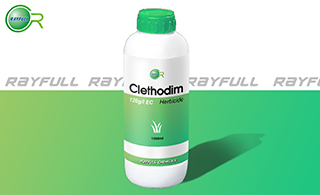 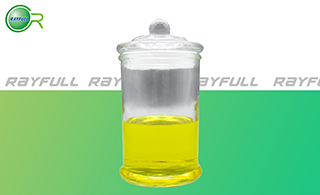 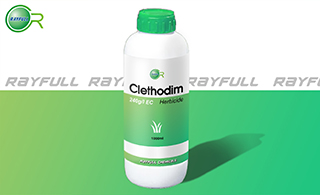 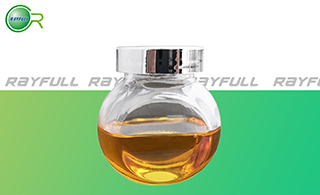 烯草酮 烯草酮
Introduction: Clethodim is a herbicide used to control annual and perennial grasses including barnyardgrass, brome, canarygrass, crabgrass, foxtail, goosegrass, ryegrass, foxtails, shattercane, volunteer cereals etc. for use on sugarbeet; soybeans; potatoes; sunflowers; alfalfa; vegetables including beans & peas, asparagus, carrots, eggplant; cotton; fax; peanuts; fruit including melons, peaches; herbs.
Common name: Clethodim
Another name: Centurion, Select, Volunteer, Ogive, Prism, Clethodime, Prism (pesticide), Cletodime, E-Clethodim, etc.
Chemical name: (5RS)-2-{(E)-1-[(2E)-3-chloroallyloxyimino]propyl}-5-[(2RS)-2-(ethylthio)propyl]-3-hydroxycyclohex-2-en-1-one
Empirical formula: C17H26ClNO3S
Structural formula:
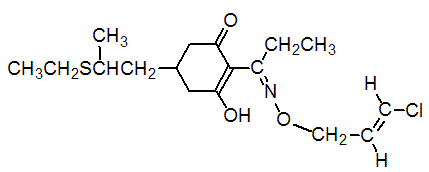
Mol. Weight: 359.92 g/mol
CAS No.: 99129-21-2
Specifications
Leading Clethodim supplier
Clethodim 120 g/L EC
Clethodim 240 g/L EC
Clethodim 50% TK
Clethodim 95% TC
Packing:
BULK PACKING
Solid: 25kg/Bag, 25kg/Drum, 50kg/Drum etc.
Liquid: 200L/Drum, 20L/Drum, 10L/Drum ect.
SMALL PACKING
Solid: 1kg/Alu bag, 500g/Alu bag, 200g/Alu bag, 100g/Alu bag, 50g/Alu bag, 15g/Alu bag etc.
Liquid: 5L/Drum, 1L/Bottle, 500ml/Bottle, 250ml/Bottle, 100ml/Bottle, 50ml/Bottle etc.
Customerized packing label
Clethodim FAO standard
Professional registration
HAZARDS IDENTIFICATION
Hazard statement(s)
H302: Harmful if swallowed.
H317: May cause an allergic skin reaction.
H412: Harmful to aquatic life with long lasting effects.
Precautionary statement(s)
P261: Avoid breathing dust/fume/gas/mist/vapors/spray.
P264: Wash ... thoroughly after handling.
P270: Do not eat, drink or smoke when using this product.
P272: Contaminated work clothing should not be allowed out of the workplace.
P273: Avoid release to the environment.
P280: Wear protective gloves/protective clothing/eye protection/face protection.
P301+P312: IF SWALLOWED: call a POISON CENTER/doctor/... IF you feel unwell.
P302+P352: IF ON SKIN: wash with plenty of water.
P321: Specific treatment (see ... on this label).
P330: Rinse mouth.
P333+P313: IF SKIN irritation or rash occurs: Get medical advice/attention.
P363: Wash contaminated clothing before reuse.
P501: Dispose of contents/container to ...
Supplemental Hazard Statements: none
MAMMALIAN TOXICOLOGY
Acute toxicity: 1) Acute oral LD50 for rat: 1133 a.i.mg/kg. 2) Acute dermal LD50 for rabbit: >4167 a.i.mg/kg. 3) Inhalation LC50 (4 h) for rat: <3.25 mg/L a.i.mg/L. 4) Moderate skin irritant (rabbits). 5) Not irritant to eyes (rabbits). 6) Not a skin sensitiser (guinea pigs).
NOEL for mice is 30, rats is 16, dogs is 1 mg/kg daily.
ADI (JMPR): 0.01 mg/kg b.w. [1999]
Classification:
US EPA Classification (formulation):III (Caution - Slightly toxic)
EC Risk Classification: Xn - Harmful: R22
ECOTOXICOLOGY
Effect on birds: moderate toxicity to birds, acute LD50 for Bobwhite quail is >1640 a.i.mg/kg. Effect on fish: moderate toxicity to fish, acute 96 hour LC50 for Rainbow trout is 25 a.i.mg/L. Effect on aquatic invertebrates: low toxicity to aquatic invertebrates, acute 48 hour EC50 for Daphnia magna is >100 a.i.mg/L. Effect on algae: low toxicity to algae, acute 72 hour EC50 for Pseudokirchneriella subcapitata is >12.0 a.i.mg/L. Effect on honeybees: moderate toxicity to honeybees, contact acute 48 hour LD50 is >51 a.i.μg/bee, oral acute 48 hour LD50 is >43 a.i.μg/bee. Effect on earthworms: moderate toxicity to earthworms, acute 14 day LC50 is 454 a.i.mg/kg.
ENVIRONMENTAL FATE
Clethodim's production may result in its release to the environment through various waste streams; its use as a herbicide will result in its direct release to the environment. If released to air, an estimated vapor pressure of 2.7×10-9 mm Hg at 25 deg C indicates clethodim will exist solely in the particulate phase in the atmosphere. Particulate-phase clethodim will be removed from the atmosphere by wet or dry deposition. Clethodim contains chromophores that absorb at wavelengths >290 nm, and therefore may be susceptible to direct photolysis by sunlight. If released to soil, clethodim is expected to have no mobility based upon an estimated Koc of 8000. Volatilization from moist soil surfaces is not expected to be an important fate process based upon an estimated Henry's Law constant of 1.2×10-11 atm-cu m/mole. Biodegradation half-lives of 1 to 3 days using 5 unspecified aerobic soils suggest that biodegradation may be an important environmental fate process in soil and water. If released into water, clethodim is expected to adsorb to suspended solids and sediment based upon the estimated Koc. Volatilization from water surfaces is not expected to be an important fate process based upon this compound's estimated Henry's Law constant. An estimated BCF of 280 suggests the potential for bioconcentration in aquatic organisms is high, provided the compound is not metabolized by the organism. Clethodim hydrolysis is pH dependent with degradation of 37%, 7%, and 0% reported at pH 5, pH 6, and pH 7, respectively, after 20 hours incubation. Occupational exposure to clethodim may occur through inhalation and dermal contact with this compound at workplaces where clethodim is produced or used. (SRC)
Usage: Herbicide reported by R. T. Kincade et al. (Proc. 1987 Br. Crop Prot. Conf. - Weeds, 1, 49). Introduced by Chevron Chemical Co. Patents: GB 2090246 Manufacturers: Arvesta; Shenyang. Fatty acid synthesis inhibitor, by inhibition of acetyl CoA carboxylase (ACCase).
Application: Systemic herbicide, rapidly absorbed and readily translocated from treated foliage to the root system and growing parts of the plant. Post-emergence control of annual and perennial grasses, at 60-240 g/ha, in a wide range of broad-leaved crops (including such field crops as soya beans, cotton, flax, sunflowers, alfalfa, peanuts, oilseed rape, sugar beet, tobacco, and potatoes), vegetable crops, trees and vines. To be used with a non-phytotoxic crop oil concentrate. Phytotoxicity Good tolerance in broad-leaved crops.
| 






